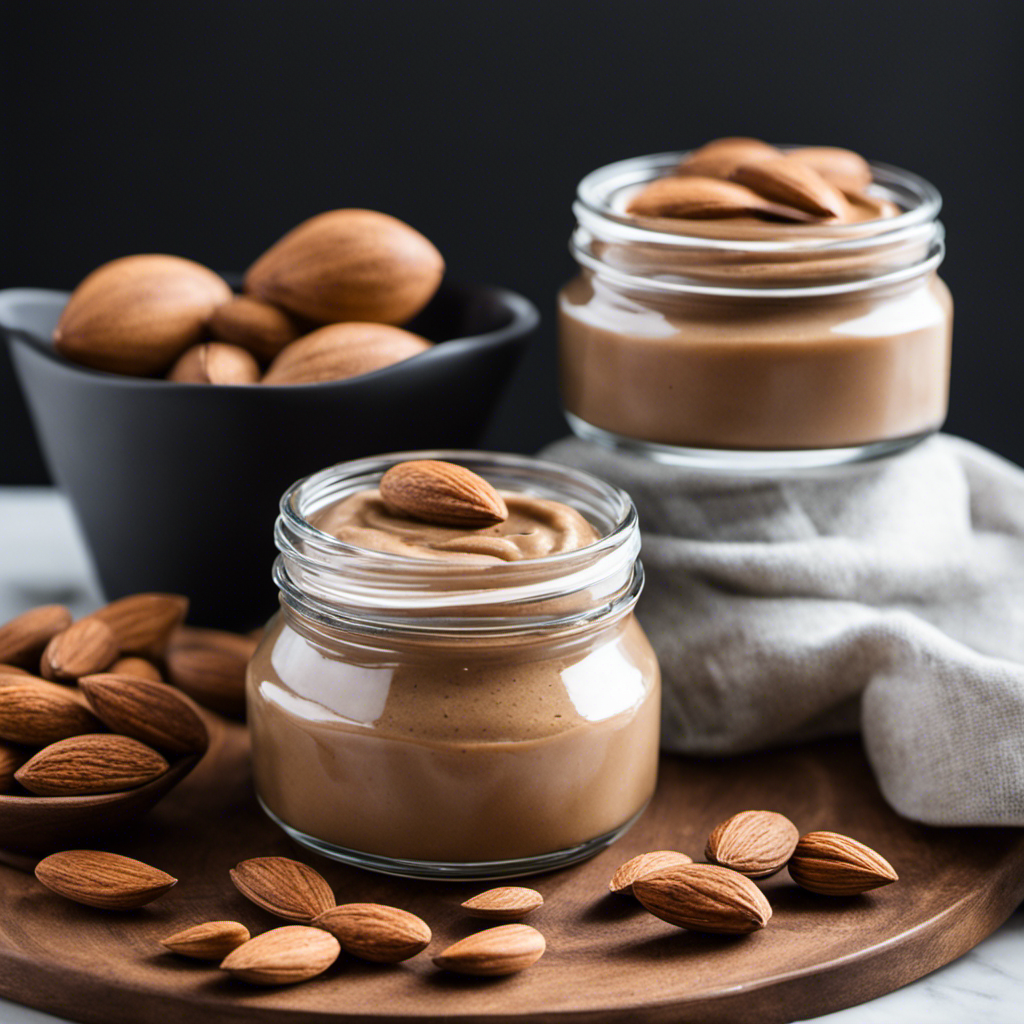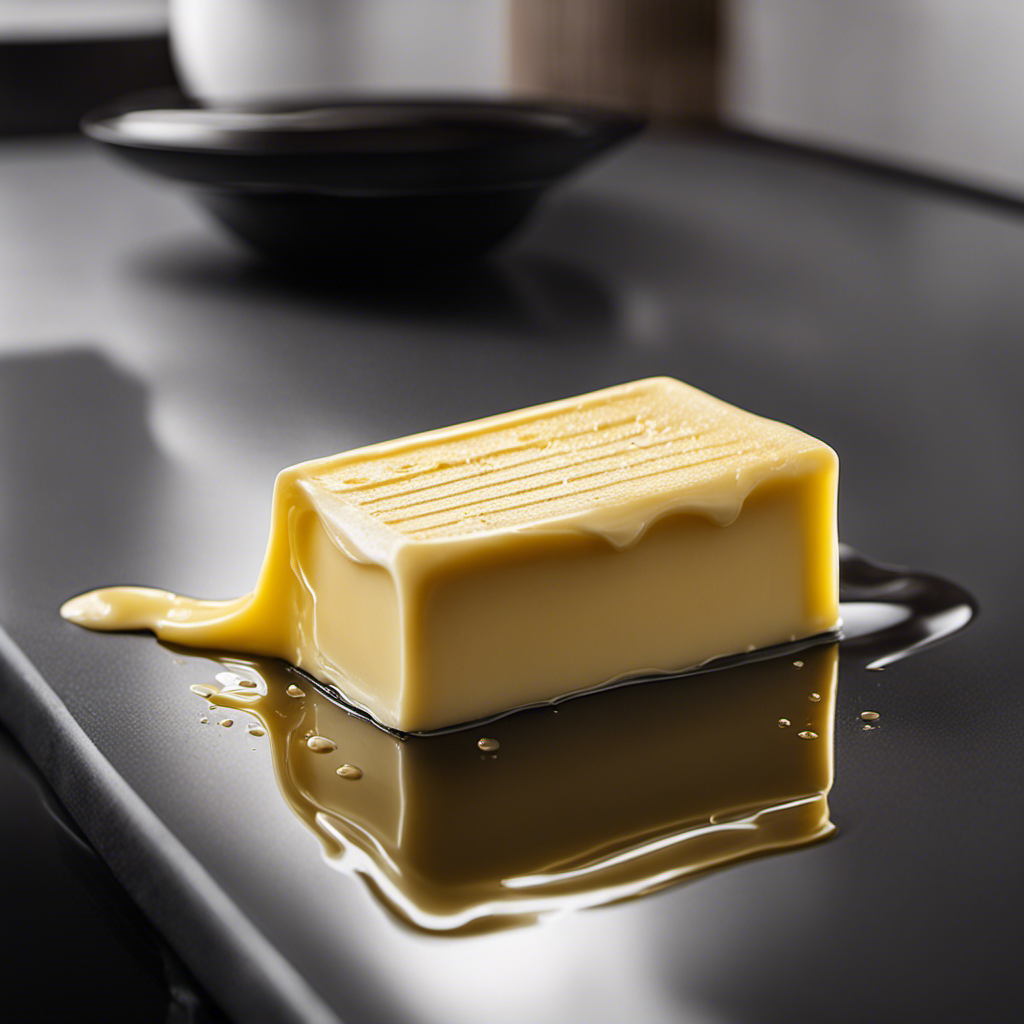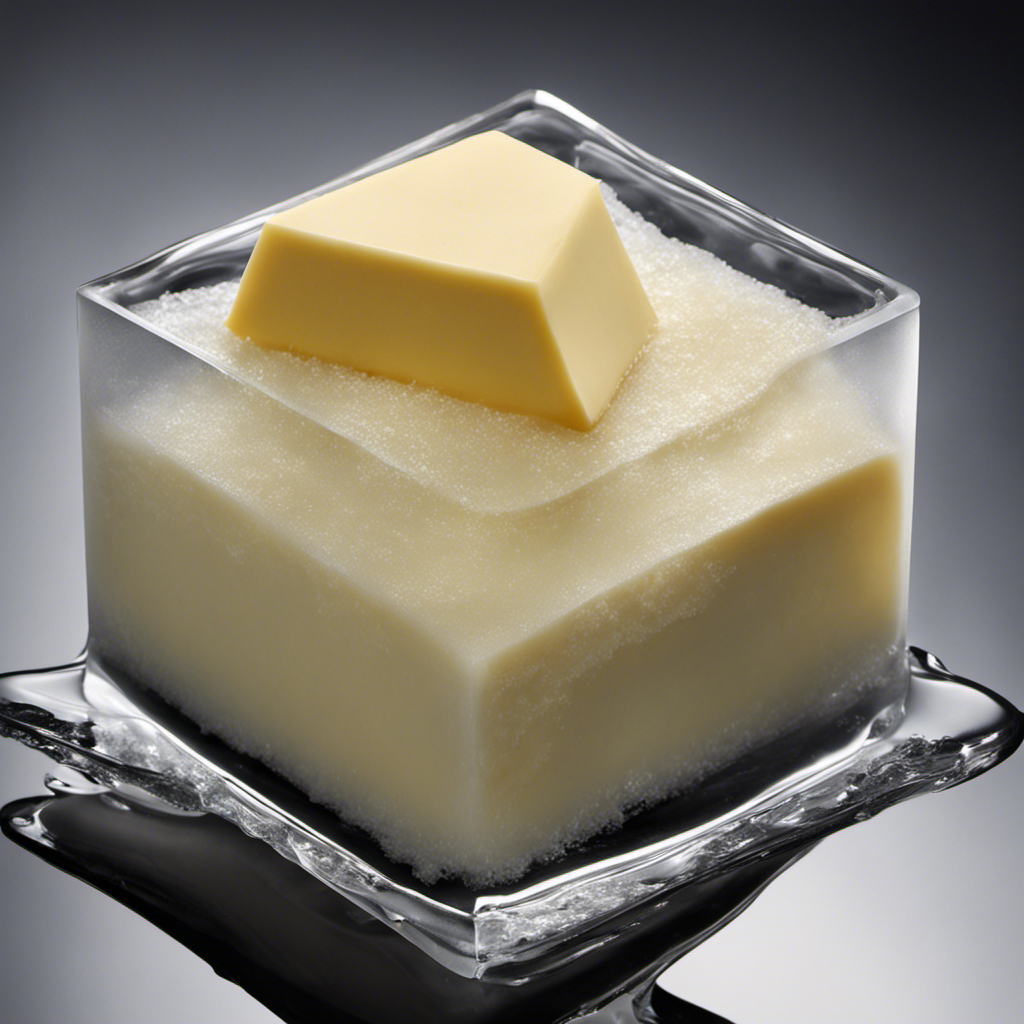I have a secret to share with you.
Ever wondered how long your almond butter stays good in the fridge? Well, I’ve got the answer for you.
In this article, I’ll reveal the storage guidelines, factors affecting the shelf life, signs of spoilage, and tips to keep your almond butter fresh for longer.
So, get ready to learn how to make your almond butter last as long as possible in the fridge.
Key Takeaways
- Almond butter should be stored between 32 and 40 degrees Fahrenheit in an airtight container in the fridge.
- The quality of almonds and the presence of additives or preservatives can affect the shelf life of almond butter.
- Signs of spoilage in almond butter include changes in texture, a rancid smell, and the presence of mold or unusual color.
- Refrigeration helps extend the freshness of almond butter by slowing down oxidation and preventing rancidity.
Storage Guidelines for Almond Butter in the Fridge
I usually store my almond butter in the fridge to make it last longer. The proper temperature for storing almond butter is between 32 and 40 degrees Fahrenheit. This temperature range helps to slow down the oxidation process, which can cause the almond butter to spoil.
It’s important to choose the right container for storing almond butter in the fridge. Airtight containers, such as glass jars or plastic containers with tight-fitting lids, are ideal for keeping the almond butter fresh and preventing any moisture or odors from seeping in. These containers also help to preserve the flavor and texture of the almond butter.
By following these storage guidelines, you can extend the shelf life of your almond butter and enjoy it for a longer period of time.
Now, let’s explore the factors that can affect the shelf life of almond butter.
Factors Affecting the Shelf Life of Almond Butter
Storing almond butter in the refrigerator helps extend its shelf life. There are several factors that can affect the shelf life of almond butter.
One important factor is the quality of the almonds used to make the butter. Fresh, high-quality almonds will result in a longer shelf life compared to lower quality almonds.
Another factor is the presence of additives or preservatives in the almond butter. These additives can help prolong the shelf life of the product.
Additionally, how the almond butter is stored in the refrigerator can also impact its shelf life. It’s important to keep the almond butter in an airtight container to prevent moisture and other contaminants from getting in.
Following these storage guidelines and considering these factors can help ensure that your almond butter stays fresh for a longer period of time.
Signs of Spoilage in Almond Butter
Keeping an eye out for changes in texture and a rancid smell can help determine if almond butter has spoiled.
Spoiled almond butter is characterized by a noticeable change in texture. It might become clumpy, dry, or develop a grainy consistency.
Additionally, when almond butter goes bad, it tends to emit a rancid smell. This smell is often described as a sour or off-putting odor.
It’s important to note that the presence of mold or an unusual color are also signs of spoilage.
If you detect any of these signs, it’s best to discard the almond butter to avoid any potential health risks.
When in doubt, trust your senses and prioritize food safety to ensure that you’re consuming fresh and safe almond butter.
Extending the Freshness of Almond Butter in the Fridge
To help maintain the freshness of almond butter, I recommend storing it in an airtight container in the refrigerator. By doing so, you can extend its shelf life and prevent rancidity.
Almond butter is prone to spoilage due to its high fat content, which can go rancid when exposed to air, light, and heat. Refrigeration slows down the oxidation process and helps preserve the quality of almond butter for a longer period.
It’s important to ensure that the container is airtight to prevent moisture and odors from affecting the almond butter. Additionally, keeping it in the refrigerator can help maintain its creamy texture and prevent separation.
Best Practices for Storing Almond Butter in the Fridge
When I refrigerate my almond butter, I always use an airtight container to maintain its freshness. Proper temperature and container selection are essential for prolonging the shelf life of almond butter. The ideal temperature for storing almond butter is between 32 and 40 degrees Fahrenheit (0 to 4 degrees Celsius). This helps prevent the oil in the almond butter from going rancid and maintains its creamy texture. Additionally, using an airtight container helps to prevent air exposure, which can cause oxidation and spoilage. I find that glass jars or containers with tight-fitting lids work best for keeping my almond butter fresh. These containers effectively seal in the flavors and prevent any unwanted odors from permeating the almond butter. By following these best practices, I can enjoy my refrigerated almond butter for an extended period.
| Proper Temperature Range | Container Selection |
|---|---|
| 32-40 degrees Fahrenheit (0-4 degrees Celsius) | Airtight container such as glass jars or containers with tight-fitting lids |
Frequently Asked Questions
Can I Store Almond Butter in the Pantry Instead of the Fridge?
I prefer storing almond butter in the fridge because it helps extend its shelf life and prevent rancidity. However, you can store it in the pantry if you plan to consume it within a few weeks.
How Long Does Almond Butter Last Outside the Fridge Once Opened?
Once opened, almond butter can last outside the fridge for about a month, depending on storage conditions. It’s important to keep it in a cool, dry place with the lid tightly sealed to maintain its quality and extend its shelf life.
Can I Freeze Almond Butter to Extend Its Shelf Life?
Yes, you can freeze almond butter to extend its shelf life. Freezing helps preserve its freshness and prevents spoilage. This method is beneficial as it allows you to enjoy almond butter for a longer period.
Can Almond Butter Go Bad if Stored in the Fridge for Too Long?
Almond butter can go bad if not stored properly in the fridge for too long. It is important to check the shelf life and ensure proper storage to prevent spoilage and maintain its freshness.
Is It Safe to Consume Almond Butter That Is Past Its Expiration Date?
Expired almond butter may not be safe to eat. To determine if it has gone bad, check for any changes in smell, taste, or texture. It’s important to prioritize food safety and discard if unsure.
Conclusion
In conclusion, proper storage of almond butter in the fridge can significantly extend its shelf life. By following the recommended guidelines and keeping an eye out for signs of spoilage, you can ensure that your almond butter stays fresh and delicious for as long as possible.
Remember to seal the container tightly and store it in a cool, dark place to maintain its quality. By taking these steps, you can enjoy the rich and creamy goodness of almond butter for weeks or even months to come.










